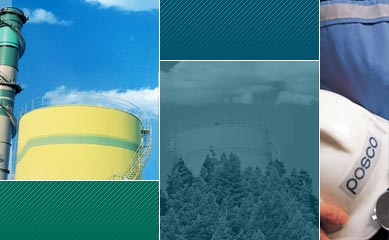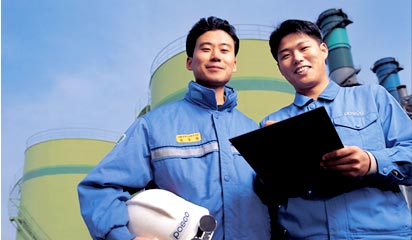|
 |
 |
||||
|
|||||
 |
|
At POSCO, we recognize that we have a corporate responsibility to help foster sustainable development wherever we do business. From the boardroom to the mill floor, the crucial issues of environmental and social responsibility provide perspective as we make¡°clean and green¡± steelmaking the core of our win-win partnerships with local communities. Since acquiring ISO 14001 certification of our environmental management system in July 1996, we have progressively embraced eco-efficiency as an integral component of our management philosophy. Introduced in 2001, the POSCO environmental performance index?POSEPI?serves as a balanced scorecard for evaluating the success of our environmental efforts, providing a comprehensive overview of our operational, management, and environmental performance as defined by ISO 14031 guidelines. In 2003, we acquired yet another powerful evaluation tool with the launch of a company-wide environmental accounting system to aid in quantifying the financial impact and benefits of our environmental stewardship. Caring for the Environment At POSCO, we aggressively strive to lower emissions, increase by-product recycling, and reduce energy consumption to ensure our operations are as eco-friendly as possible. In addition to ongoing pollution control equipment and facility upgrades, we continue to develop and implement cleaner production processes as well as adopt cleaner fuels and raw materials to reduce pollution at the source. We vigilantly monitor air and water quality using automated telemetry systems, including sophisticated ¡°open path¡± monitoring systems to identify hazardous emissions not detected by conventional air quality monitoring methods. In 2003, we invested KRW 93.2 billion?6.3% of our entire investment spending?to improve our pollution control capabilities. We installed dust collectors and waste processing facilities at Pohang as part of the No. 3 Stainless Steelmaking Plant expansion project. At Gwangyang, we installed additional dust collectors on all steelmaking lines as well as equipment to reduce volatile organic compound emissions during chemical processing. Over the past six years, we have raised our by-product recycling ratio from 77% in 1997 to 98.8% in 2003, dramatically reducing the amount of waste disposed of in our landfills. We have achieved a 100% recycling rate for slag, channeling this material that accounts for 73.9% of our by-product stream into applications like cement, fertilizer, and roadbed aggregates. by-product stream into applications like cement, fertilizer, and roadbed aggregates.We have also continued to develop applications to recycle waste refractory, dust, and sludge. |
